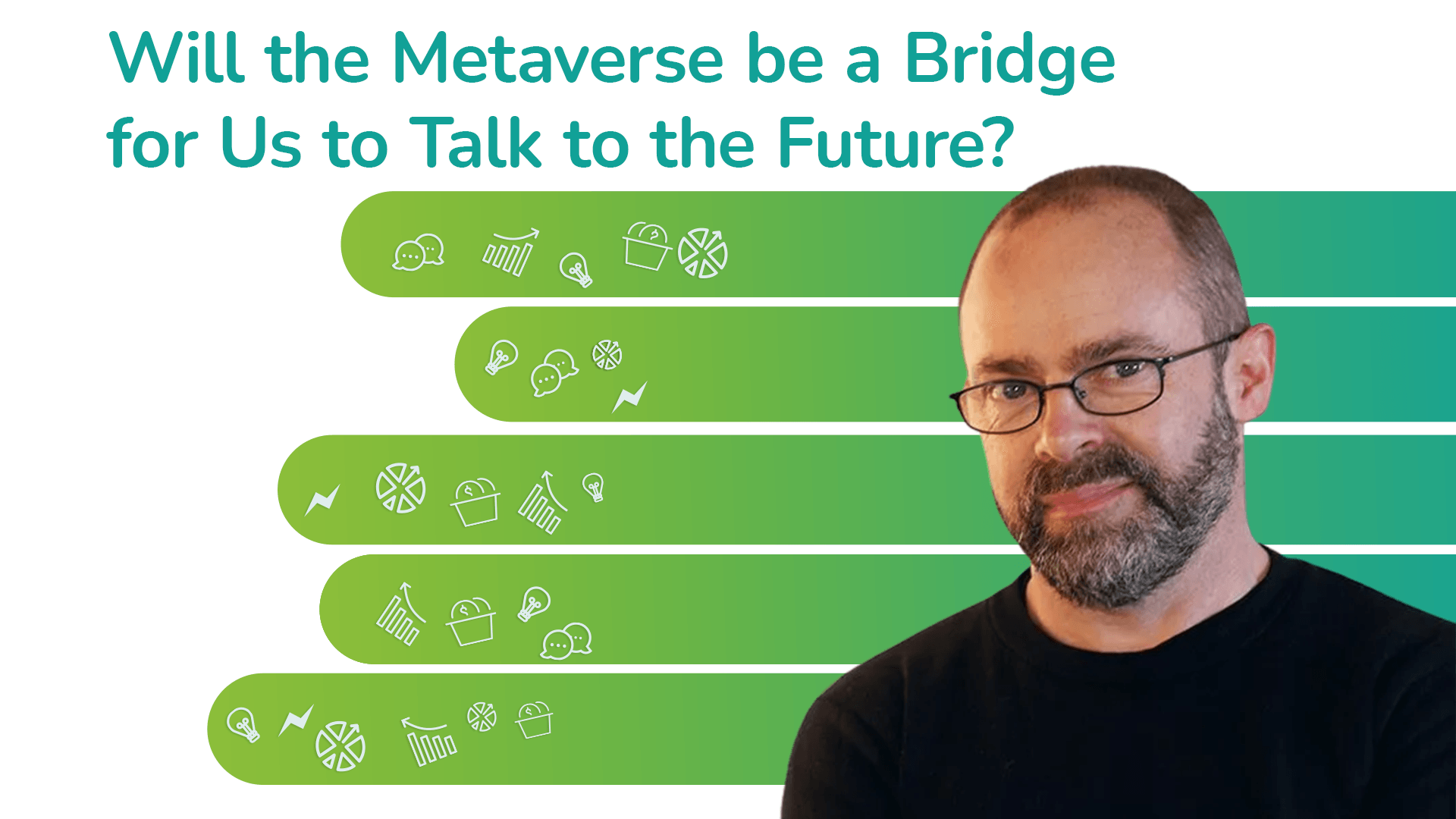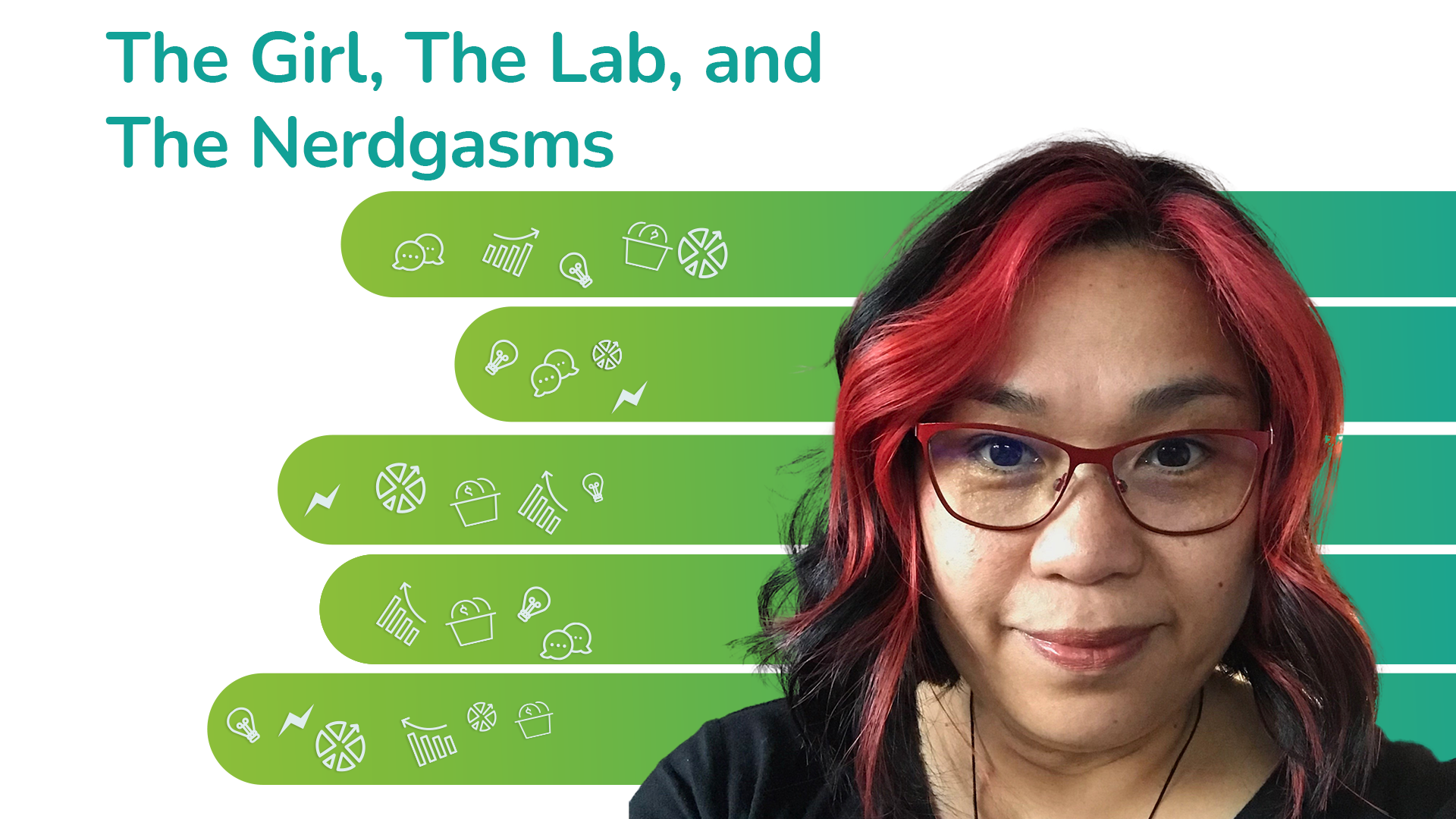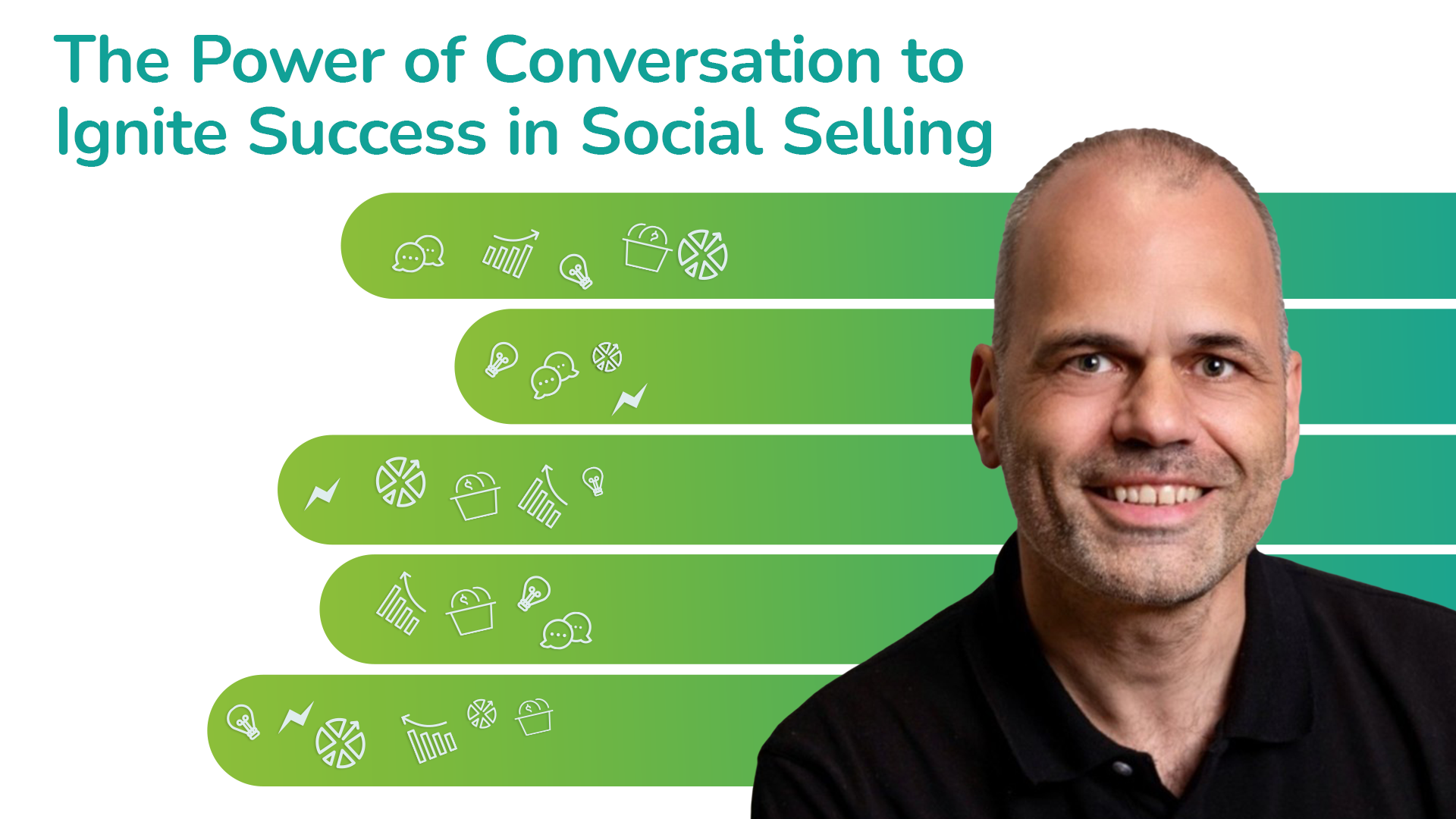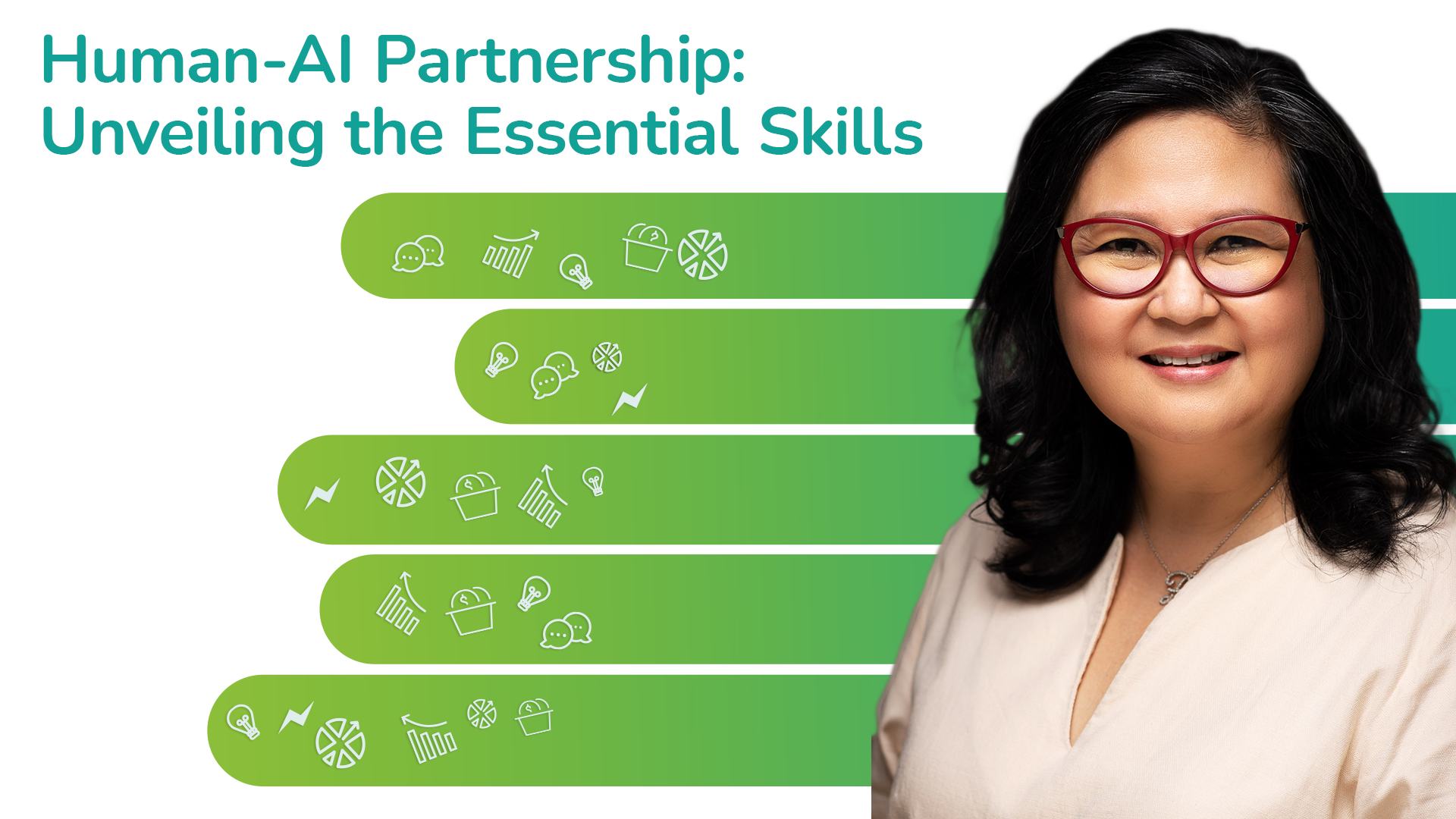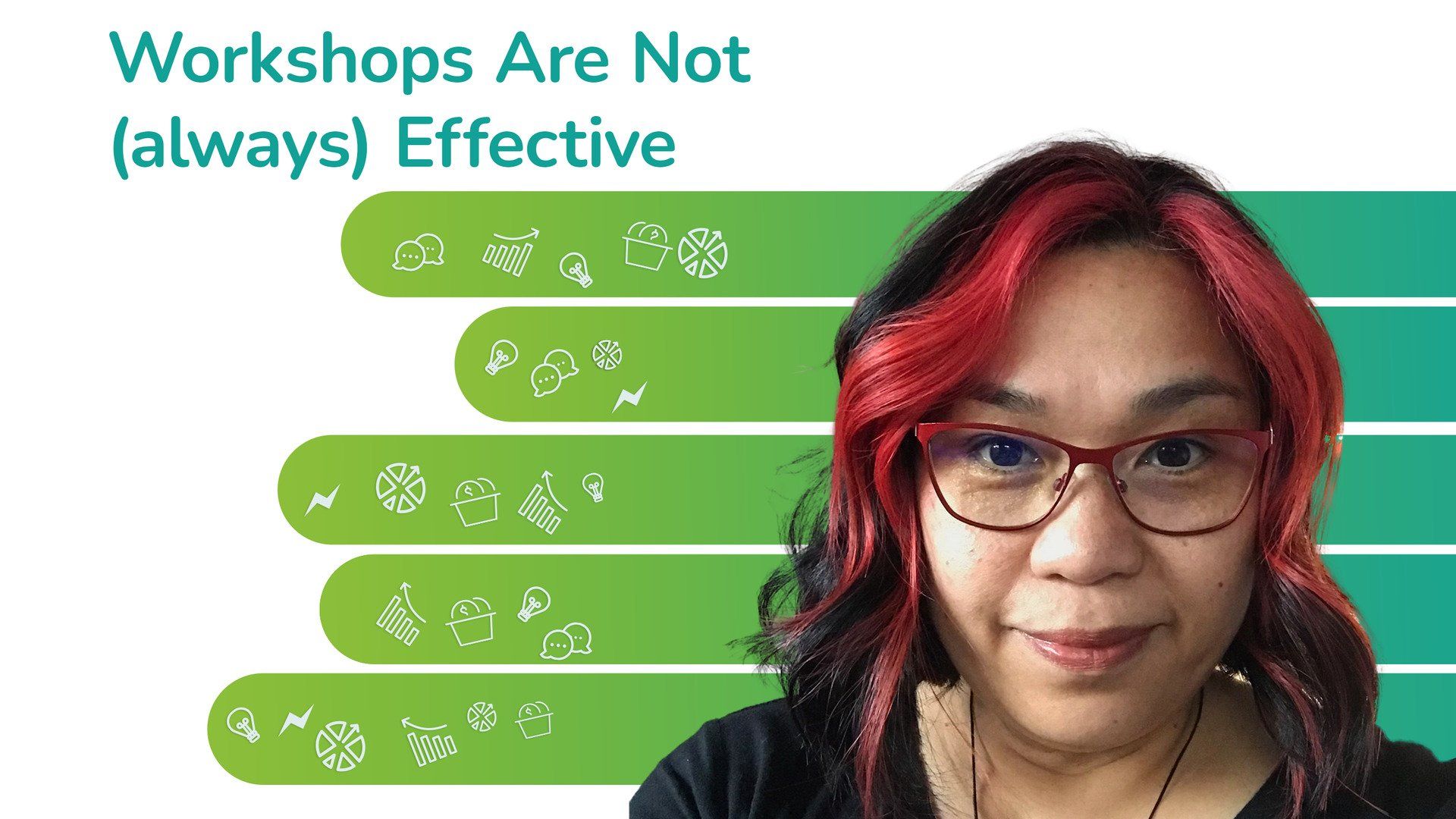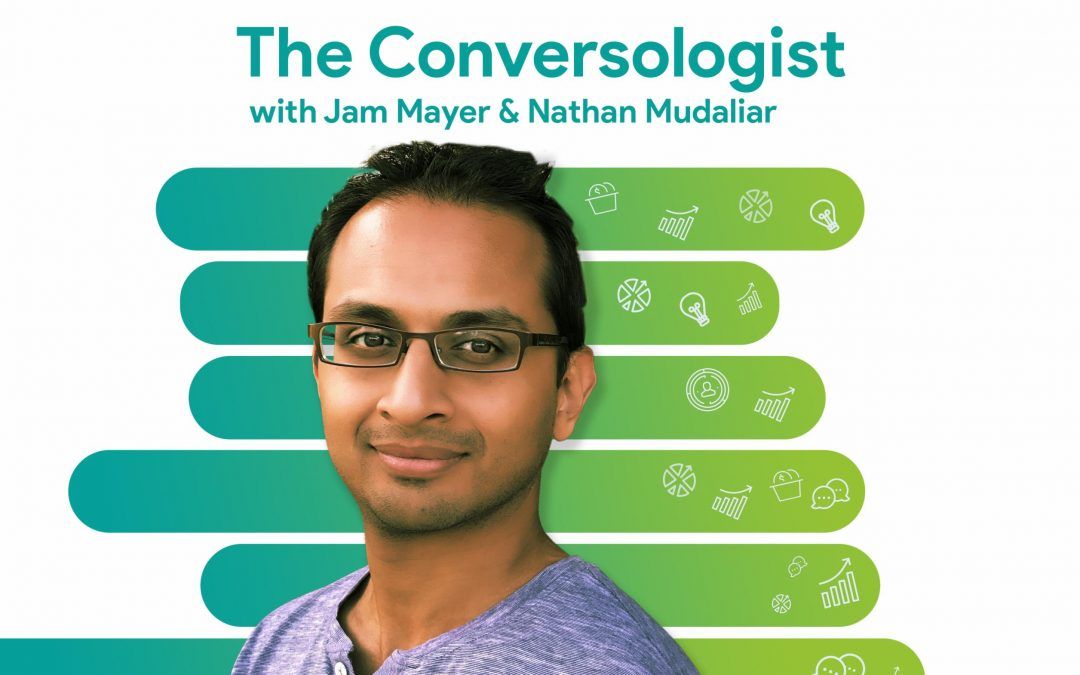
Season 1 Episode 5 | 24 minutes
The Personality in Chatbot Marketing Chatbots are commonplace in business and marketing, covering everything from brand awareness, to customer service, to online sales. Most chatbot conversation designers will agree an effective chatbot needs a personality. But nearly always, ‘personality’ means a name, a face, and not much else.
This week we talk chatbot personalities, skeuomorphism and the key to true customer engagement.
Hosts & Guests
Jam Mayer
Rew Shearer
Episode Conversation
Topics that were discussed:
- Chatbots should have a personality for branding and consistency as a digital employee
- How developed should the personality be? How far do you go?
- The importance of “remembering the positive experience” when engaging with a chatbot
- It isn’t just a name or a photo
- What is chatbot fatigue?
- Elements of Humanising a Chatbot
Episode Transcript
Introduction
Introduction
Jam (00:00:05.165)
Welcome to the Conversologist podcast, where we talk about the art and science of conversation in the digital space. We know that technology can be a powerful enabler in the customer journey from marketing to customer service. But communication and emotional connection still need to be at the core.
Jam (00:00:26.615)
Episode five, The Personality and chatbot marketing. Why it's more than just a pretty face. I'm your host Jam Mayer and with me, of course, is senior content Conversologist Rew Sheerer.
Rew (00:00:41.045)
Just as you are speaking of pretty faces, here I am.
Jam (00:00:44.175)
Yeah
Rew (00:00:45.575)
I think that was meant to be.
Jam (00:00:47.775)
So you planned this
Rew (00:00:49.325)
Of course.
Jam (00:00:51.275)
OK, so this week we're back into a favorite topic, chatbots and its personality.
Chatbots should have personality
Rew (00:00:58.325)
Right now there's a general consensus with conversation designers that chat bots should have a personality, right?
Jam (00:01:07.805)
Yes, definitely. For sure. 100%. OK, I think that's enough. See, look, a chat board is basically your digital employee, right? That means it is a representation of your brand or business. It's one of the many multi touch points in the customer journey. Right. Meaning if you've got a store face to face, brick and mortar and you've got a website and so on and so forth, why would it then be different from the brick and mortar store to a website or even messenger, if that's where you're going to deploy your digital employee? So, yes, it needs to have a personality because again, people remember and I think I've mentioned this in a few of our blog posts, right. I mean, people remember how they engage with the people in your business, which means high marketing recall and, of course, long term relationship.
Rew (00:01:57.365)
OK, that makes a lot of sense, though. So the chatbot, even if it is just a conversation as simplistic that is scripted into the computer and people will have a chat with it on Messenger, it is still considered like an employee. It's a representative of your company. It should in some way represent the values and the personality of your company or at least be designed to engage with your customers. Is that right?
Jam (00:02:23.495)
Yes, exactly.
How developed should the personality be?
Rew (00:02:24.965)
OK, so here's my question of how deep do you go with personality? I mean, how developed should personality be? You don't want to go so far that people think they're actually talking to a real person, but you want them knowing that they're talking to a computer, right?
Jam (00:02:42.185)
Yes, definitely. I mean, you have to set that expectation at the start just based on feedback from some chatbot users, when I just talk to them on a user experience standpoint, in the beginning, they thought they were actually talking to a human being, but it was actually a chat bot. Right. So it's a chat, but it is what it is, right? It is it human. So, yes, we do create the personality to represent and be aligned to the brand. But the aim here is not to actually fool them, if that makes any sense.
Rew (00:03:11.055)
It makes a lot of sense.
Jam (00:03:11.895)
We don't want to break the user's trust. If you don't trust the chatbot, they're never going to go back and engage with them.
Rew (00:03:17.945)
OK, that makes it so it needs to clearly be a chatbot. You don't want to fool people into thinking that it's actually a person. But as I understand it, research shows that people prefer dealing with friendly computers. Basically, that includes computer messages, dialog boxes that come up that have friendly messages as opposed to the very dry sort of stuff that you might get. And if a chatbot shows human traits, we tend to have a better experience. We want to spend more time talking to it and we respond better to it, correct?
Jam (00:03:52.415)
Yes. Yep.
Rew (00:03:53.705)
OK, and say your chatbot has a job to do, which of course they will do, be it brand awareness, lead generation, dispensing information, making sales, anything else off the top of your head?
Remember the Positive Experience
Jam (00:04:06.815)
Customer service.
Rew (00:04:08.105)
People are more likely to spend time with it if it's friendly, if it's chatty, if it's got human traits, they're more likely to pay attention to what it has to say. They're more likely to remember the experience. A fun human personality, rich chatbot will be more effective, correct?
Jam (00:04:28.085)
Yes, exactly. And I just want to focus on remembering the experience you just mentioned that which is part and parcel of the whole process when you're building a chatbot personality. You know, our job as conversation designers, you know, especially on the writing side of things, the scripting and so on, is for the user to engage with a bot and feel they've had a positive experience. You mentioned that already, a better experience, positive experience, whatever that means to the user, because we can go on and on what a positive experience can be like. That means also that they would go back and use the technology again.
It isn't just a Name or Photo
Jam (00:04:45)
Here's the problem. Some conversation designers out there, and this is also for those who would like to be a conversation designer, if this is something you'd like to do in the future in your career, you know, some would think that creating a personality is just about the name and how it looks like. So say, what are some of the names that you've come up with, with some of our clients? Can you.
Rew (00:05:32.185)
OK, we've we've had Rebecca I can remember we've had Ali, that really is a cartoon icon. We've had Ordinilly, which I was quite proud of.
Jam (00:05:43.645)
Yes.
Rew (00:05:44.165)
But again, yes, it was didn't even go as far as a photograph, that one.
Jam (00:05:48.025)
So, of course, that's just you know, it's part of the process. And you had to go through a process where you had to think of what the right name is. And as you said, you know, it could be a cartoon or it could be a photo, or if you want to go complex, high tech, then go for a digital human. But once you start engaging with a bot, you realize, you know, hey, Rebecca, you realize it's the same chatbot, you probably have talked to on other websites. Right? Meaning you can have different pictures or photos, but what happens there is that users tend to have chat bot fatigue. I'm going to coin that a little bit
What is Chatbot Fatigue?
Rew (00:06:25.875)
Chatbot fatigue?
Jam (00:06:27.625)
Yes. So there's ad fatigue and all fatigue. Now, this is not original, but I'll claim it for today.
Rew (00:06:35.045)
OK!
Jam (00:06:35.905)
Chatbot fatigue, OK, what that means is that because of the poor experience they've had in the past and I've heard this countless times, I don't want to go and talk to a chat, but it's just boring or just just useless. Right. And they've had bad experience. And as more and more chat bots are created as we speak around the world, users will always prefer to always talk to a human. You know, they're tired. That's the fatigue. They're tired of seeing the same thing, quote unquote, over and over again. So when they see Rebecca, when they engage with Rebecca, it's the same thing as the other Rebecca probably in London and another Rebecca in Israel and so on and so forth. And it just it just go like, OK, you know what? I've had a bad experience with the first Rebecca or even the second one. I'm not even going to start engaging with a third Rebecca, you know, which defeats the purpose of deploying a chatbot in the first place. So poor developers and us all that effort, tech and creativity just goes down the drain. Your bot, the third, the fifth or the seventh Rebecca doesn't even get a chance to shine. So ergo, chatbot fatigue, does that make sense?
Rew (00:07:44.245)
It makes a lot of sense. So it's not just about the name, is it? The point is that they're all much the same in their personality as well. They just are sort of FAQs in a slightly more conversational or slightly more indirect form, whereas real personality goes a lot deeper, correct?
Jam (00:08:04.975)
Yeah, and depending on what that personality is, it is now, again, whether the user decides to engage with it or not. I mean, it's the same as human beings. You know, if you don't feel, you know, sometimes when you go to a store as an example or you're trying to chat with a life person and you get a scripted response, so to speak, and it's the same thing over and over again, you feel bad because. Oh, great. I'm not special.
Rew (00:08:31.435)
Okay.
Jam (00:08:31.765)
Yeah, it's the same thing, but that's the whole point. Yeah. So for conversation designers out there, look, when you say I'm creating a chat, but personally, don't stop with just a name and a photo, seriously, because it's more than that. Right.
Elements of Humanising a Chatbot
Rew (00:08:46.615)
Right! And I covered some of these elements in a webinar we did earlier on humanising your chatbot. The way I saw it, there are three key elements that are quite easy to introduce to a chatbot that you can use to varying extents that make it more engaging, make it more human, and give it some elements of personality. And they are human fallibility and attitude.
Jam (00:09:14.695)
Mm.
Rew (00:09:15.115)
Now, humor, I don't really need to explain too much why you'd want to have humor in there, but very few chat bots that I've encountered use humor at all. And I think this is a, this is a major oversight. My background is in copywriting and I have to say that in a lot of my experience, I've also had clients saying, oh look, can you take the joke out and put my phone number in again, please? It's not just something that chatbot designers might be pressured, feel that pressure to do, which is cut out any jokes or any humorous comments and just focus on doing the job. Humor actually is a tool. First off, it can lower defenses. So you tend to feel warmer and more open and you're happier approaching somebody or something that talks to you with the sense of humor, that cracks a joke. Emotional memory, we tend to remember feelings over simple conversations. So the chatbot and or the person that you met at the party or that you met at the networking event, who made you laugh? Again, you tend to remember. That's emotional memory because you remember the feeling over the words. Humor holds attention for a very simple reason. If somebody has told you a joke that triggers the reward center in your brain, you feel good, having had a bit of a chuckle and you want more. We naturally want to get more of what feels good. So just by dropping a joke in here, people are going to be more likely to keep on engaging with the chatbot waiting for the next joke. What's going to be funny next time? I had quite a good experience developing that with my first SchnauzerBot.
Jam (00:10:55.545)
Yes Apolo.
Rew (00:10:56.685)
Yes. A schnauzerbot being a dog, it wasn't high level humor by any means, but I was dropping just little doggie kind of jokes and they're all food, I love food and, you know, just little doggie references that reminded us that this was a dog and tried to have a bit of fun with some of the language. In that respect humor also dispels negativity. If you go in there feeling a bit grumpy and and disgruntled that you have to be dealing with a chatbot, its humor can dispel that negativity and make you feel a lot happier about the experience.
Rew (00:11:34.005)
Humor also is very much a social tool that humans use. I mean, it's one of the ways that we relieve tension, one of the ways that we make people feel at ease. One of the ways we have people trust us, it's actually a very useful social tool for social animals. Interestingly, and you may not know this Jam, but rats laugh. Did you know that?
Jam (00:11:58.875)
What?
Rew (00:11:59.295)
There is scientific research that shows that rats, which are social animals, they live in groups, particularly as pups or whatever you call young rats, they play and they make a little chirping sound that scientists have actually interpreted as being laughter.
Jam (00:12:14.055)
Right.
Rew (00:12:15.495)
It is quite a social tool. It creates that feel good engagement. I want to spend more time with you. I like you. And it cuts a lot of the crap. You don't need to make a lot of rational arguments as to why somebody should like you if you can crack a few jokes.
Jam (00:12:31.845)
Yeah, but, you know, humor, as you know, some of our clients when you just said it earlier on, maybe we should just drop that because an example would be my brand is very professional, for example. I mean, it's hard to put in humor if you want to be professional or corporate, so to speak. I mean, how does that work then?
Rew (00:12:53.535)
Right. So that's where as a copywriter, you really need to understand the persona of the customer, of the user. And this is where user experience writing comes in. You need to understand, who is this chatbot going to be talking to? What are the values of the brand? And you really have to try and design humor that's going to fit within those parameters. You don't want to be making jokes that are inappropriate that might possibly offend or be off the mark for that particular group. Perhaps you have an engineering chatbot that provides nuts, bolts and other supplies for engineers. Well, you don't want it to be cracking jokes about making selfies because that's not really going to resonate with engineers. But if it makes some kind of engineering savvy quip, they will have a real chuckle, as engineers tend to do. And you're going to have a bit more engagement with them.
Jam (00:13:53.565)
Yeah, it's similar to little targets like marketers and any I guess I don't know and in any industry like marketers, we've got those jargon stuff and we'd find it funny but to an engineer, they go, whaaat?
Rew (00:14:05.925)
Absolutely.
Jam (00:14:08.105)
So carry on. So that's humor, right?
Rew (00:14:10.135)
That was humor. Yeah. So the second one, fallibility. Now, I don't mean a chatbot that screws everything up. That's probably not going to go down so well, particularly with the client, even though the users might enjoy the experience of watching it fail. Epically. Error is subtler than that, but error is very human. And if you listen to the way that you and I have been talking, we occasionally repeat our words. We hesitate, we have little "ums", and "ers" in there. They are simply elements that make us human. You can do the same thing with a chatbot. Now I remember seeing a blog that said "one of the things you should never do with a chatbot don't waste people's time with bot typing" I strongly disagree with that. I think one of the most engaging things is the three dots of the typing chatbot. Now, that's for two reasons. One, very practical because it pauses the dialogue so that the reader has time to read what the chatbots just delivered to them before the next message comes. But the second is that it does just add that element of this chatbot is typing, it's got fingers, it's doing a human thing. It's even thinking about what it has to say. Now, these are all subconscious. I'm sure we don't actually sit there and come to those conclusions. But it just gives you a sense that there is something more than just a microchip on the other end of the conversation.
Jam (00:15:33.235)
Yep.
Rew (00:15:34.345)
Admitting a lack of knowledge. Now, this is another one. Chatbots can sometimes simply say, I don't have an answer for that or something. I think the more human you can get in the way, you admit lack of knowledge, particularly if you can infuse humor, then it becomes a bit more human and it becomes more engaging. So even if it's just words that are not commonly seen in the chatbot, oh gee, I haven't been taught that one. Heck, you know, that sort of thing, those sorts of words and a bit of punctuation, if you like, rather than words that are a constructive part of the conversation. But again, they create that sense of being human.
Jam (00:16:12.985)
Yeah, and I just want to add again, going back to what I said earlier, it's the same thing over and over again. What I've been seeing and lack of knowledge is I'm sorry, I didn't understand that. And it's the same script on most chatbots. Right. I am now appealing to other conversation designers and writers out there. By the way, if you can think of something else that is obviously aligned to the brand and the tone and language, instead of just saying, sorry, I don't understand that or I'm new and I'm still in training, et cetera, which is admitting lack of knowledge, can we please think of something else anyway?
Rew (00:16:51.475)
Absolutely
Jam (00:16:52.735)
Yeah. What else about error.
Rew (00:16:56.335)
OK, well this is kind of error is related to it and here's a great word. Skeuomorphism, Skeuomorphism. Yeah. OK, skeuomorphism: is essentially introducing real world things into a user interface, however, that may be on a computer. So whether it's voice chat or whether it's written chat, whether it's messenger or whatever it happens to be, skeuomorphism is really another word for those little elements of the "ums" and the "ers" and you might even put in stars, heavy sigh, if the chatbot can't answer a question instead of saying, I'm sorry, I don't have an answer for that, you could have heavy sigh and the chatbot says "fudge" one of the things about it. You know, just something to break that tension of "ugh the chatbots failed". Skeuomorphism, in its simplest form is and I hate to say this, but those websites that you may have seen two decades ago that look like wood paneling with writing over the top of them, that was clumsy skeuomorphism. It was attempting to soften something very clinical, very computerised and make it a bit more tactile, a bit more real, a bit more part of the world around us.
Jam (00:18:18.205)
Right. OK.
Rew (00:18:20.995)
The third one is attitude now attitude is basically by us, I mean, it's saying that you have fairly strong feelings towards a particular point of view, perspective, a brand, even a group of people. It can be positive or it can be negative. So don't take it as being necessarily a negative thing. But for example, if your chatbot was for Harley Davidson, you can see how the chatbot might have an attitude that represents the Harley Davidson brand. It's a bit tough. It's about street. It uses language that represents the loudness, the intimidation of the Harley Davidson brand. If you have a chatbot that, say, is selling tickets for a particular basketball team or rugby team, you really want it to have attitude and bias towards that team. Yeah, you're coming to the game. You can support our boys or whatever it happens to be. This creates affinity and again, it's a social tool, so it creates connection with the user as part of the user interface. It's not just indifferently, impersonally providing a service.
Jam (00:19:31.465)
So I just want to add to that. I'm just curious. I mean, that's also like this culture differences or does that include is that included an attitude and also empathy? I mean, is a part and parcel of attitude or is that a total different thing?
Rew (00:19:48.615)
Attitude is very much part of that. You could also call it register. A good example of that was I don't know who was the chatbot that we developed for a website that introduced people to social services near them. Now, I don't know, his job was simply to dispel the information, but we did want to do it with sensitivity to the user. The people who were going to go to this site may have just needed budget advice. They may have just needed to find out where they could get information about housing or accommodation. But I don't know. They also provided counselling services, suicide prevention, support for domestic abuse victims. Her attitude and it was her we decided that a female would probably be better across the board in terms of trust and in terms of being non threatening. Her attitude had to be one of sympathy, empathy, supportiveness, positivity, but all gently and all nonjudgmental. So, I mean, these are all part of attitude. It was very nuanced and we had to be very sensitive to her attitude towards the user.
Summary
Jam (00:20:56.725)
Wow. So how do we summarise this before we actually end the episode, which I am in a few seconds or so? I'm really hoping that this episode helps feature conversation designers out there and chat bot builders alike, because we're not just this message or what we've been talking about the last 20 minutes or so. It's not just for conversation designers, but also the tech side to chatbot builder's themselves, you know, when they start thinking or creating chatbot personalities and beyond. Right. Would you like to do just a good summary of everything?
Rew (00:21:29.485)
OK. Yes. To sum up first off, know your user, know the persona of the person your chat bot is going to be talking to. Now, it may be very generic, but usually you can whittle it down to a fairly typical sort of user and if not, then you can at least make sure you're representing the brand accurately. So know that. Then when you actually write the script, don't be afraid of writing it like a script. Like a script for an actor rather than simply thinking, this is an FAQ, this is a chat bot. Deal with it as if you're writing a script for an actor and you want to keep "ums" and the "ers" and the little nuances and the little jokes, because these are all of the things that are going to make it a bit more human, a bit more engaging and don't be afraid of attitude.
Closing
Jam (00:22:18.925)
Oh, that's awesome! Thank you, Rew. So in our next episode, I'm so excited about this, we have our first special guest,
Rew (00:22:27.685)
Our first ever special guest. Yes, Nathan Mudaliar. He's a Sydney based neuroscientist and copywriter. Now, this peanut butter and jelly who goes by the handle the cortex copyrighter. I love that name.
Jam (00:22:40.585)
I love it, too.
Rew (00:22:41.395)
In line with Conversologist philosophy. That's our own one. That conversation is both an art and a science, Nathan takes us to the next level. His work in copywriting chatbots and even screenplays. He won an award for his screenplay "Combined Brain Science and Psychology with creative writing" for copy that is both engaging and effective. I'm excited. Can you tell?
Jam (00:23:06.845)
Yes. And guess what?
Rew (00:23:09.115)
What?
Jam (00:23:09.295)
You get to write the questions I'm going to ask him.
Rew (00:23:13.525)
Deal, deal I'm on it, can't wait.
Jam (00:23:14.755)
All right. So if you have any comments, feedback or questions of your own, we would love L-O-V-E in Caps Lock to hear from you, OK? It's not just you listening to us. We would like you to join the conversation and we could even include your question at the end of our next podcast.
Rew (00:23:32.755)
If you're on AnchorFM, leave it as a voice message. If you're catching this podcast elsewhere, please leave a comment. For show notes and previous episodes, please visit our page at The Conversologist.show. The music was composed and produced by Carlo Vergara. Thank you for joining us.
Jam (00:23:51.055)
Thank you.

